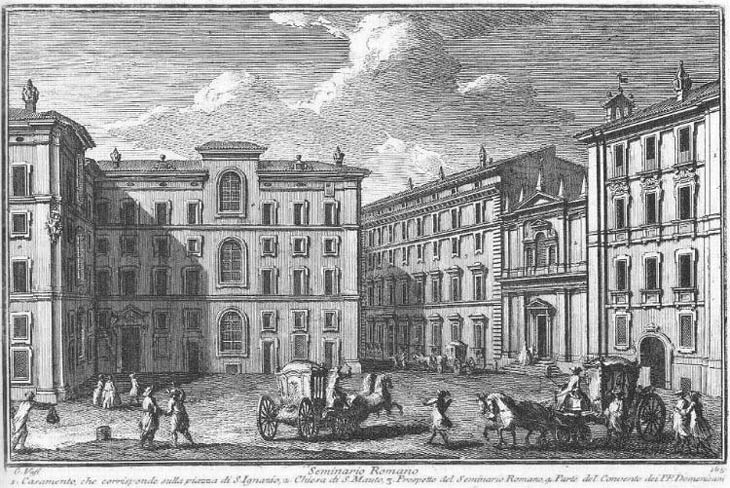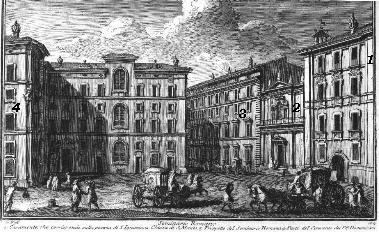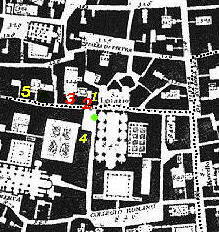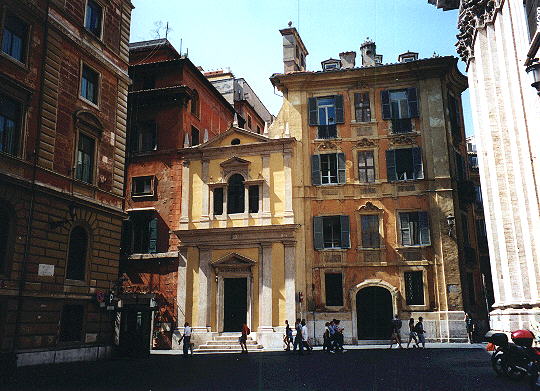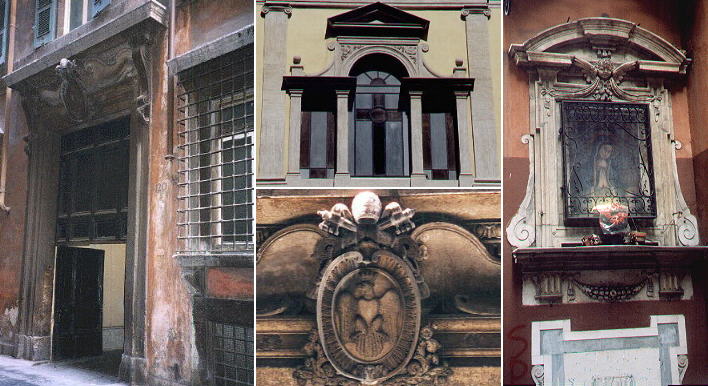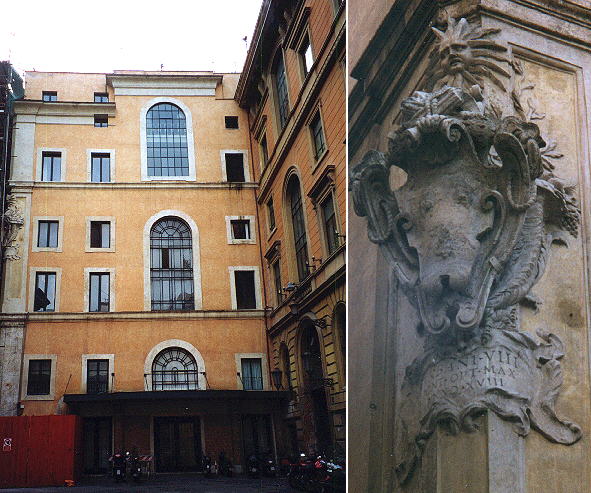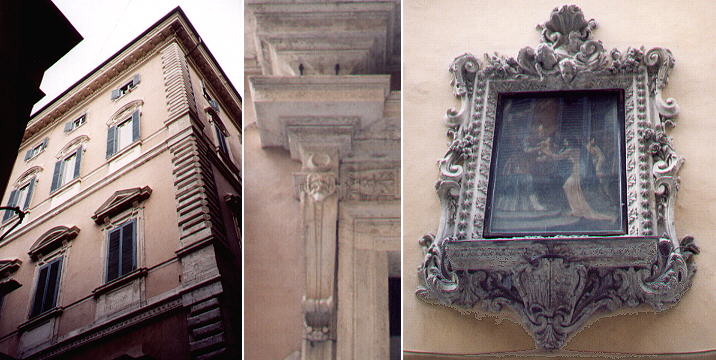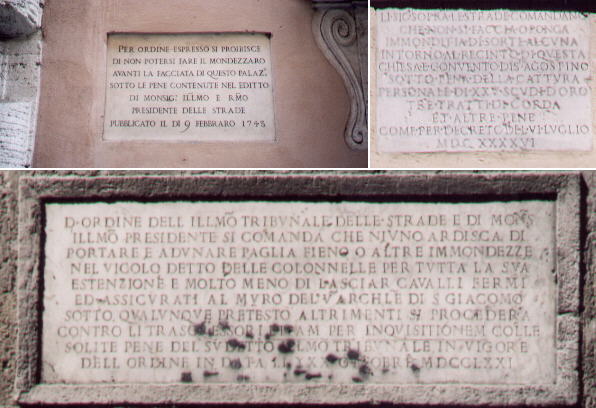  Seminario Romano (Book 9) (Day 1) and (Day 4) (View C7) (Rione Colonna) and (Rione Pigna) In this page:
Via del Seminario is such a narrow street that even Vasi gave up
showing the fašade of the Seminary erected by Cardinal Borromeo near S.
Ignazio. The view is taken from the green dot in the 1748 map below.
In the description below the plate Vasi made reference to: 1)
Buildings opposite S. Ignazio; 2) S. Macuto;
3) Seminario Romano; 4) Dominican Monastery adjoining S. Maria sopra Minerva. The small map shows also: 5) Palazzo Serlupi. 1) is shown in another page.
The dotted line in the small map delineates
the borders between Rione Colonna (upper half) and Rione Pigna (lower half).
This view shows the north side of the little square. To the right S. Ignazio. The house (with some painted windows) is part of the very theatrical complex built by Raguzzini in the square opposite S. Ignazio. The fašade of the church of S. Macuto is embellished with small obelisks in memory of the obelisks found in this area, where most likely a Temple of Isis was located. To the left Via del Seminario leads to Piazza del Pantheon. On the entrance of the Seminary (still a seminary) a coat of arms of Leo XII (the only one I have found in Rome outside the Vatican). In the narrow street on the left side of the building there is a finely framed XVIIth century madonnella.
The south side of the square was occupied by a Dominican Monastery. On the corner a coat of arms of Urbanus VIII has much suffered: the papal symbols have been destroyed and the bees have almost disappeared but above it the Sun of the Barberini still shines.
The palace was built in 1585 by Giacomo Della Porta for Ottaviano di Francesco Crescenzi. In 1641 it was inherited by Francesco Serlupi who added to his surname that of the Crescenzi: the palace is thus called Serlupi Crescenzi. Its most ancient parts are marked by the moon of the Crescenzi while later additions (such as the richly decorated sacred image in the photo) show the fleur-de-lys of the Serlupi (who had a palace in Piazza di S. Maria in Campitelli).
Palazzo Serlupi has an inscription
forbidding "il mondezzaro" (the accumulation of garbage) below the windows of the building. The papal
government was worried about the appearance and the cleanliness of the streets of Rome and several
regulations were issued in the XVIIth and XVIIIth centuries. They provided for both fines and corporal punishment.
Most of the inscriptions belong to the papacy of Benedictus XIV (1740-58): this pope was known
for walking incognito outside the papal palaces to get first hand knowledge of what was going on in town.
For sure his repeated attempts to improve the cleanliness of the streets, show that he was not happy
with what he saw.
Next plate in Book 9: Seminario di S. Pietro in Vaticano Next step in Day 1 itinerary: Chiesa di S. Marcello Next step in Day 4 itinerary: Piazza della Rotonda Next step in your tour of Rione Pigna: Sant'Ignazio Next step in your tour of Rione Colonna: San Silvestro in Capite
Go
to |
All images © 1999 - 2003 by Roberto Piperno. Write to romapip@quipo.it
